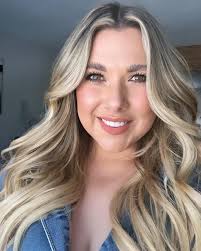Your Guide to Extension-Safe Products: Protecting Your Investment
You've just created a stunning transformation for your client. The color is perfect, the blend is seamless, and their confidence is radiating. But what happens the moment they step out of your salon?
Last month, my client Sarah came back for her maintenance appointment after only three weeks. Her extensions felt like straw. She said, "I don't know what happened. They were so soft when I left."
I said, "Sarah, what shampoo are you using?"
She showed me a photo on her phone. It was a clarifying shampoo with sulfates. I said, "That's the problem. This shampoo is stripping all the moisture from your extensions."
She looked devastated. She said, "But it's expensive! I thought expensive meant good."
This is a major challenge I see all the time. Clients often don't realize that their favorite shampoo or styling cream could be damaging their extensions. The truth is, protecting that hair extension investment goes far beyond the initial installation.
Let me show you what to look for and what to avoid.
Why Hair Extensions Need Special Care
Before we talk about products, you need to understand why extensions are so different from natural hair.
Your natural hair receives a constant supply of oils from the scalp, which keeps it moisturized and protected. Hair extensions don't have this natural hydration source. This makes them far more vulnerable to ingredients that strip moisture or create buildup.
My client Jennifer asked me, "Why can't I just use my regular shampoo?"
I said, "Because your regular shampoo probably has sulfates that strip moisture. Your natural hair can replenish that moisture from your scalp. Extensions can't."
Sulfates: The lather trap
We've all been taught that a rich lather means clean hair. But that satisfying foam often comes from sulfates like Sodium Lauryl Sulfate.
Sulfates are powerful detergents. They strip away not just dirt but also essential oils and moisture.
Sarah's dry, straw-like extensions? That was sulfate damage. For extensions that can't replenish moisture, the result is hair that quickly becomes dry, brittle, and prone to tangling and breakage.
How to spot them: Look for "Sulfate-Free" on the front of the bottle, but always double-check the ingredient list for words ending in "ate," like Sodium Lauryl Sulfate.
Heavy silicones: The illusion of shine
Silicones give hair that slippery, shiny feel, and they aren't all bad. The problem lies with heavy silicones that don't rinse away easily.
My client Amanda came in after two months and her extensions felt heavy and dull. She said, "I've been using this amazing shine serum every day."
I looked at the ingredients. Dimethicone was the second ingredient. I said, "Amanda, that's creating a buildup on your extensions. It looks shiny at first, but it's actually blocking moisture."
Ingredients like Dimethicone create a film over the hair. Over time, this leads to significant buildup, making the extensions feel heavy, dull, and dry underneath the coating.
How to spot them: Look for ingredients ending in "cone," like Dimethicone, Cyclomethicone, and Amodimethicone.
Drying alcohols: The evaporation enemy
Not all alcohols are created equal. Fatty alcohols like Cetyl and Stearyl alcohol are actually good for hair. The ones to watch out for are short-chain alcohols.
My client Rachel used a popular drugstore hairspray every day. After a month, her extensions felt crispy and dry. I looked at the ingredients and Alcohol Denat. was the third ingredient.
I said, "Rachel, this alcohol is evaporating and taking your hair's moisture with it."
How to spot them: Check the first few ingredients on the label. If you see Alcohol Denat., Ethanol, SD Alcohol 40, or Isopropanol high on the list, avoid it for daily use on extensions.
Building Your Extension-Safe Arsenal
Now for the fun part: choosing products that will make extensions thrive.
The foundation: Shampoo and conditioner
This is the most important part of any hair extension care routine.
Look for formulas that are sulfate-free, paraben-free, and color-safe. Seek out nourishing ingredients like argan oil, jojoba oil, and hydrolyzed keratin.
Application tip: Emulsify a small amount of shampoo in your hands and gently cleanse the scalp. Let the suds run through the ends of the extensions. No need for vigorous scrubbing.
Apply conditioner only from the mid-lengths to the ends, keeping it far away from bonds, tapes, or wefts to prevent slippage.
Jennifer made this mistake. She came in after two weeks and one of her tape-ins had slipped out. She said, "I have no idea what happened."
I said, "Jennifer, did you put conditioner on your roots?"
She said, "Yeah, I put it all over my hair like I always do."
I said, "That's what caused the slippage. The conditioner weakened the adhesive. You have to keep it away from the tapes."
Beyond the wash: Essential treatments
Because extensions lack natural oils, they need moisture added back in regularly.
A weekly hydrating mask applied to the mid-lengths and ends is non-negotiable for keeping extensions soft and manageable.
A lightweight leave-in conditioner is perfect for daily detangling and moisture. A small amount of serum or oil on the ends can seal the cuticle and add shine.
Sarah, whose extensions felt like straw, started using a weekly mask and daily leave-in conditioner. Three weeks later, she came back and said, "My extensions feel soft again! Thank you."
Styling smart: Products and techniques
You can absolutely style your hair with extensions, but you need the right tools and products.
Heat protectant is the most crucial styling product. Before any heat tool touches the hair, it needs to be protected. Look for a professional-grade spray that protects up to 450 degrees.
My client Michelle burned her extensions with a flat iron. She came in panicked. She said, "They smell burned and feel crispy."
I said, "Michelle, were you using a heat protectant?"
She said, "No, I didn't think I needed it."
Unfortunately, we had to replace some of her extensions. Now she never uses heat without protection.
For styling products, apply mousse and creams from the mid-lengths down. Choose a flexible, alcohol-free hairspray for a light hold.
Dry shampoo is excellent for extending time between washes. Opt for powder-based or alcohol-free aerosol formulas and concentrate the spray only on the roots of your natural hair.
Troubleshooting Common Product-Related Problems
My bonds/tapes feel sticky or are slipping
Jennifer had this problem. The likely culprit is conditioner, oils, or silicone-heavy products applied too close to the attachment point.
Solution: Remind yourself to apply hydrating products only from the mid-lengths down.
My extensions feel dry and brittle
Sarah had this problem. The likely culprit is hidden drying alcohols in hairspray or other styling products, or buildup from heavy silicones preventing moisture from getting in.
Solution: Check all your product labels. Switch to sulfate-free products and add a weekly deep conditioning mask.
My extensions are constantly tangled and frizzy
Rachel had this problem. The likely culprit is a combination of dryness from sulfates and a lack of regular leave-in conditioner to seal the cuticle.
Solution: Switch to a sulfate-free system and add a lightweight leave-in conditioner. Make sure you're brushing properly with an extension-safe brush.
FAQs
Are expensive extension-safe products really better than drugstore options?
Not always. The key is reading the label. A good drugstore sulfate-free option is better than a luxury brand full of heavy silicones.
How often should I use a clarifying shampoo on my extensions?
Sparingly. For most people, once a month is plenty to remove buildup without causing excessive dryness. Always follow up with a deep conditioning treatment.
Can I use purple shampoo on my blonde extensions?
Yes, but with caution. Extensions can grab onto purple tones quickly.
Amanda used purple shampoo every wash and her extensions turned gray-purple. She came in panicked. I said, "Amanda, you're over-toning. Mix a few drops of purple shampoo with your regular shampoo to dilute it, and don't leave it on for more than a minute."
What about swimming with hair extensions?
Before getting in a pool or the ocean, wet your hair with clean water and apply a leave-in conditioner. Braid it to prevent tangling. Wash your hair as soon as possible afterward to remove chlorine or salt.
Your Investment, Protected
Choosing the right products is the single most effective way to ensure hair extensions look beautiful and last longer.
Sarah, whose extensions I rescued from sulfate damage, texted me last week: "My extensions still look amazing four months later. Thank you for teaching me what products to use."
That's what proper product selection can do.
Ready to learn more? Visit Christian Michael Hair Extensions or book an appointment for personalized guidance.

Tiffany Loe
Owner & Master Stylist
Hair extension expert and salon owner with a passion for helping stylists succeed. Tiffany has been transforming hair and building confidence for over 15 years.




